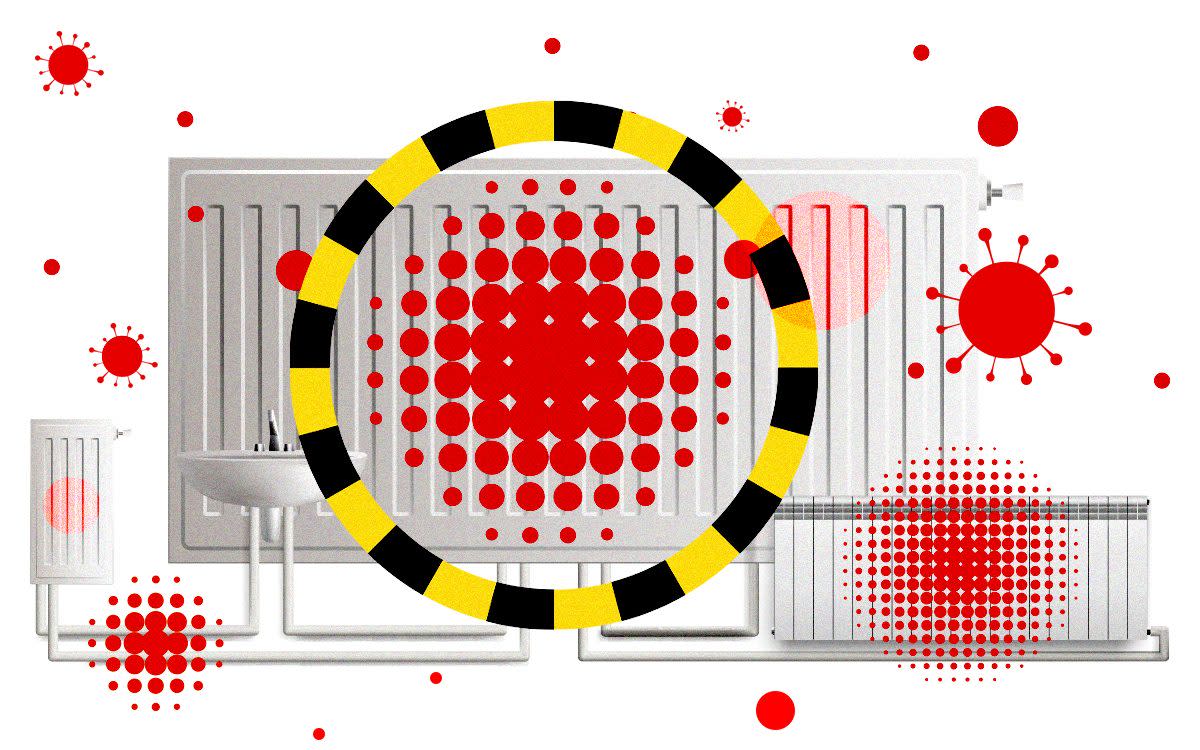Experts reveal how to optimise heat and humidity to reduce Covid transmission inside the home


Battling the coronavirus in winter is going to be tricky. Should you turn the heating up or down? Should windows be opened or closed? And how important is it to get the humidity right in your home?
A new study shows that both temperature and humidity play a key role in the survival of the virus and therefore the risk of transmission.
According to the preprint, published last week, Sars-Cov-2 survives best at low temperatures in dry air. But even at warmer temperatures, droplets of the virus remain stable for far longer if the air lacks moisture (see chart).
Both findings will become increasingly relevant over the coming months.
During winter, as the air gets colder, it also dries out. But whacking on the heating indoors also reduces the amount of moisture in the air - as well as inside our sinuses. As mucus gets drier, it becomes worse at trapping infections in our airways.
In the study, researchers in America modelled the coronavirus' half life at a variety of different temperatures and relative humidities - a measure of the percentage of water in the air, with saturation point (when the air is most muggy) at 100 per cent.
At 10C with a relative humidity of 40 per cent, virus droplets stayed active for as long as 27 hours. But at 27C when humidity was higher, at 65 per cent, the half life was just an hour and a half.
“Outdoors you've got sunlight and ventilation to help you, even if it's cold,” says Dylan Morris, an ecologist and evolutionary biologist at Princeton University and coauthor of the report. “In typical indoor settings, climate control keeps things cool and dry. Add in poor ventilation and limited UV and [the virus] does pretty well.”
So what are the implications for the coming months? At home, it's worth keeping the temperature at between 20C and 22C - but don't let the air dry out.
“In wintertime, when we heat the air, we often end up with very low relative humidity indoors, around 20 per cent or lower,” says Linsey Marr, professor of civil and environmental engineering at Virginia Tech and coauthor of the report.
“It probably would not hurt to try to keep the humidity between 40 per cent and 60 per cent indoors during the wintertime, as our results indicate that the virus does not survive as well under these conditions.
“Work by Akiko Iwasaki suggests that our immune response might be stronger at these conditions than at lower humidity,” she adds. “We do not know for sure if this will help, but it could and there is no harm in doing so.”
Humidifiers, or even a glass of water on top of the radiator, can help to increase the amount of moisture in the air. But experts say it's also worth opening a window - this will also improve ventilation and stop the air from becoming stagnant.

Don't, though, turn your home into a hothouse. If temperatures reach 27C and humidity rises above 65 per cent it won't only be uncomfortable, but you could result with a mould problem - which in itself can contribute to a raft of health problems, including asthma and eczema.
But the study also has implications for public spaces as it suggests that social distancing may not be as effective in a cold, dry, indoor environment compared to outdoors.
“Our results provide a mechanistic explanation for the many observed Sars-Cov-2 superspreading events in cool indoor environments such as food processing plants, where the typical temperature is around 10C, or in dry indoor environments such as long-distance flights,” the study says.
Amandine Gamble, from the department of ecology and evolutionary biology at the University of California, adds that if these sorts of places cannot be avoided, wearing high quality personal protective equipment should be a prerequisite.
“Other problematic places might be schools, restaurants and workplaces, where low humidity as a consequence of heating can facilitate virus persistence, in parallel to the mixing of people from different households and bubbles,” she says.
But key to preventing such venues from facilitating super-spreading events is good ventilation, she adds, plus physical distancing and use of face masks where this isn't possible.
In Germany, for instance, children have been told to take blankets to school so the windows can be kept open.
“The German government is also putting a lot of money into fixing buildings to improve ventilation,” says Martin McKee, professor of European Public Health at the London School of Hygiene and Tropical Medicine. “This makes a huge amount of sense, given everything we know.”
Protect yourself and your family by learning more about Global Health Security


